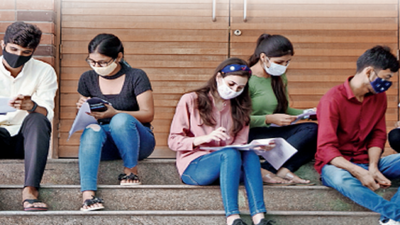
For India’s 36 states, union territories, and 707 districts, the Niti Aayog report released on Monday presents multi-dimensional poverty estimates. The general methodology used is in line with accepted world standards.
Indicators of poverty have decreased from 47% to 44% and the multi-dimensional poverty index (MPI) value has nearly halved between 2015–16 and 2019–21, putting India on track to meet the SDG target 1.2 (of cutting multi-dimensional poverty by at least half) years before the target date of 2030.
According to a formal statement, it “demonstrates the government’s strategic focus on ensuring sustainable and equitable development and eradicating poverty by 2030, thereby adhering to its commitment towards the Sustainable Development Goals (SDGs)”.
The 12 SDG-aligned indicators that make up the national MPI measure deprivations in 12 different areas, including health, education, and standard of life. These include housing, assets, bank accounts, cooking fuel, sanitation, drinking water, years of education, maternal health, child and adolescent mortality, nutrition, and maternal education. According to the research, all 12 indicators have seen a noticeable improvement.
“I am pleased to note that all states and UTs have made noteworthy improvement between NFHS (National Family Health Survey)-4 and NFHS-5. According to Suman Bery, vice chairperson of Niti Aayog, “India’s multi-sectoral strategy to combating poverty has been visible in the reduction of multi-dimensionally poor individuals to nearly half, accounting for 14.96%, and the better MPI score noted in this edition.
Significant improvements have been made in these areas as a result of the Center’s focus on enhancing access to sanitation, nutrition, cooking fuel, financial inclusion, drinking water, and power. The MPI’s 12 parameters have all exhibited growth. Flagship programmes like the Poshan Abhiyan and Anaemia Mukt Bharat have helped to lessen health disparities.
Swachh Bharat Mission (SBM) and Jal Jeevan Mission (JJM) are two initiatives that have improved sanitation throughout the nation. The 21.8 percentage point improvement in sanitary deprivations demonstrates the effectiveness of these measures. With a 14.6 percentage point decrease in those without access to cooking fuel, the Pradhan Mantri Ujjwala Yojana (PMUY) has made a positive impact on people’s lives.
According to the report, programmes like Saubhagya, Pradhan Mantri Awas Yojana (PMAY), Pradhan Mantri Jan Dhan Yojana (PMJDY), and Samagra Shiksha have also greatly decreased multi-dimensional poverty in the nation.
“The government’s consistent dedication to enhancing people’ lives and fostering a brighter future for all is reflected in the amazing progress accomplished through extraordinarily low deprivation rates, particularly for access to power, bank accounts, and drinking water. “Significant reductions in deprivations across multiple indicators have been achieved through consistent implementation across a diverse set of programmes and initiatives that have strong interconnections,” the official statement continued.
The national MPI report, according to the resident representative of UNDP India, Shoko Noda, highlights India’s remarkable progress in nearly halving multi-dimensional poverty between 2015–2016 and 2019–2021. This progress highlights the nation’s unwavering commitment to achieving the SDGs and its determined efforts to address poverty and improve the lives of its citizens.
In her comment on the findings, Noda added, “It is commendable that India’s rural areas and its poorest states have shown the fastest decline.”
The 12 MPI parameters are all better. The Poshan Abhiyan and Anaemia Mukt Bharat are two programmes that have helped to lessen health inequalities.

















